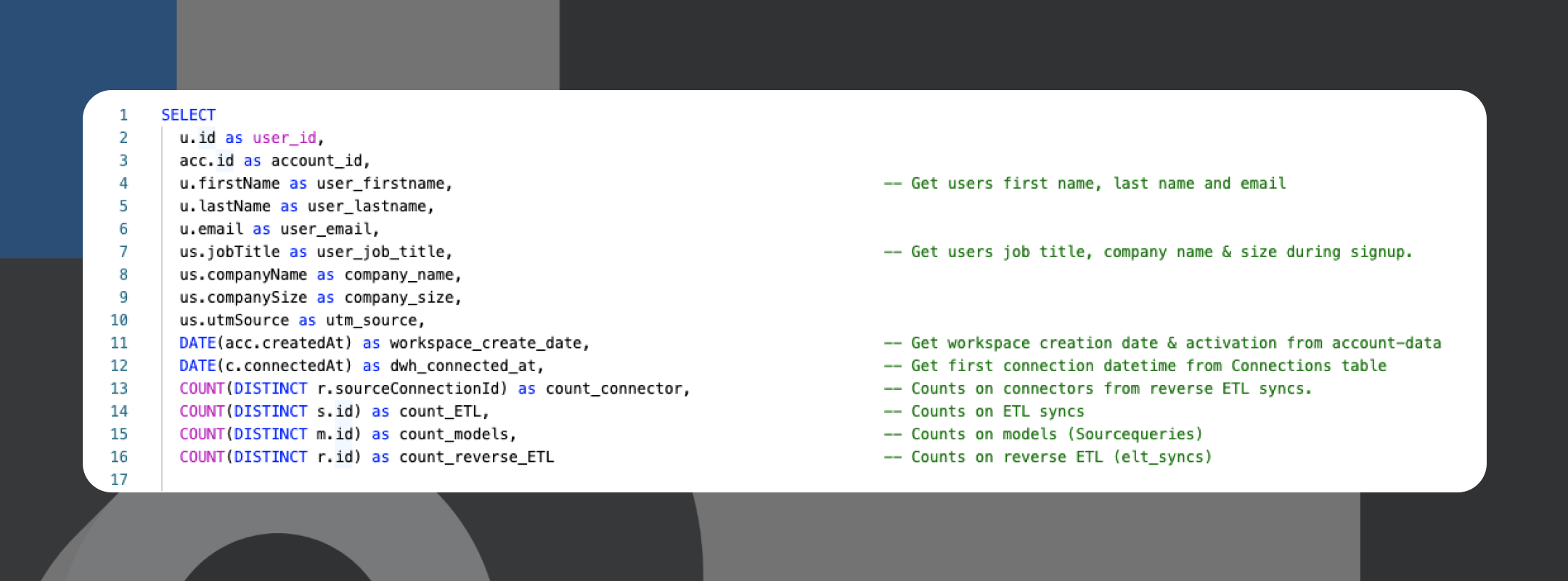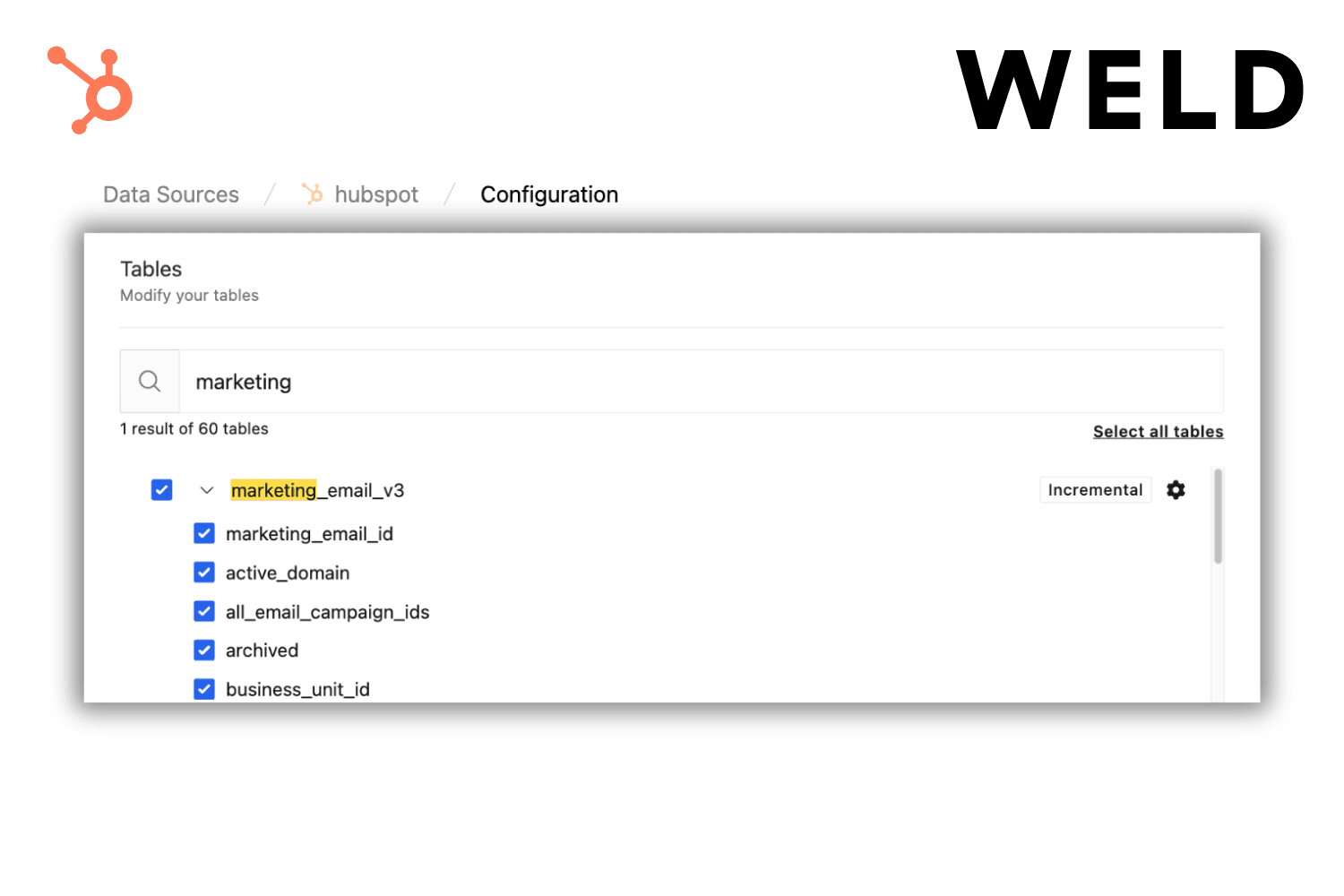Every company wants to be able to measure their success. Often, performance tracking is done at a team or department level — and there might be discrepancies in how metrics are defined, leading to messy reporting and misalignment. This is why clearly defining core business metrics that every team agrees on is essential.
So where do you begin? You might already have multiple dashboards up and running, but want to maintain KPI alignment as your business scales. Or, you may have yet to select the right metrics to track, and you want to get set up properly from the outset. Whatever the case, you’re sure to find some helpful tips outlined in this article.
What makes a good business metric?
Before getting into how to define your metrics, it’s important to know what the qualities of a good business metric are. To find out, we asked the data experts from our in-house team, who help organizations of all sizes define their core business metrics. Here’s what they shared:
- Core metrics must have value. Your metrics need to be relevant to the main objectives of your business, and be good measures of success.
- Core metrics must be actionable. Avoid vanity metrics and focus on the data points that can truly guide your decisions and strategy.
- Core metrics must be unambiguous. There should be no room for misinterpretation, and every user must agree on the same definitions.
This last point is what brings integrity to your reporting, and builds trust in your business data from all of your teams. And as Trine Nørgaard, a Solutions Engineer at Weld says:
“They should be well defined. What exactly is a customer? Are shipping costs included in the average order value? How are cancelled orders considered?”
That leads us right into our next section…
How to define your core business metrics: a 5-step framework
With a handle on what good business metrics look like, it’s time to get into how to define those core business metrics. There’s no single best way to measure your customer health score, or even to calculate your customer acquisition cost. So it’s up to you to come up with metrics definitions that make sense in the unique context of your business. This 5-step framework will help you select and define metrics that help every member of your organization understand the bigger picture.
1. Start by setting goals
Before you launch into establishing definitions, dig into what you want to measure and why. This can relate back to your company and team goals, business strategy, customer journey, product functions, or anything else that’s relevant to you. Here are some helpful questions to ask:
- What are your short and long term company goals? How will you measure success?
- Are there any major changes coming up, or have there been any recently?
- What are the most important elements of your business model?
- Have you mapped a customer journey, and do you know the key conversion points?
- What is your business philosophy (are you product-led, customer-centric, sales-driven)?
2. Ask teams for their input
While you want definitions that every team can agree on, this doesn’t mean you have to take a top-down approach. Gather information from every team on which metrics they track and how they measure them, to give you a clear overview of how things are currently being done. You can also ask about which metrics they would like to track but don’t currently, or any suggestions they have to better define their metrics.
“It really is a company exercise. Each team can define their own metrics, but there needs to be someone who oversees this and ensures that metrics are consistent. You want to avoid one department defining CAC differently from another.”
- Trine Nørgaard, Solutions Engineer at Weld
3. Select the metrics you want to define
Based on the goals you set and the feedback from your teams, you can start to select the core business metrics you ultimately want to define. Looking at the metrics that are already being tracked, find the ones that are most tracked across teams. How your marketing department measures performance probably overlaps with some of the customer success metrics being tracked, like customer health score and customer lifetime value. These are the most important ones to define, because several teams will be referring to them on a regular basis.
From this, create a list of the core metrics you want to define at a company level. Keep in mind that teams may still need to track some metrics individually that are relevant to their domain. This is where clear ownership is essential — there should be a stakeholder in every team who’s responsible for defining the metrics that are unique to that department.
4. Establish your metrics definitions
Now that you know which metrics are core to your business, it’s time to define each one. This includes both the commercial and technical definitions, so it’s important for the data and strategy teams or experts to collaborate on this. You can look at how metrics are currently defined and either keep them as-is, adjust them, or start from scratch. The important thing is that definitions are clear, documented, and universal. Everyone at the company should have the same understanding of what each metric represents and be able to access the metrics definitions.

A single source of truth for company data and metrics tracking makes alignment far more achievable. With Weld’s Metrics Store, creating metrics alignment across teams is easy. All of your technical and commercial definitions are built and stored in one place, so all of your teams mean the same thing when they discuss MRR, CAC, or LTV. Governance and accessibility are built in with change logs, approval flows, and easy search and filter options.
5. Set up your metrics for tracking
Finally, it’s time to move forward with your newly-defined metrics. When you’re setting up the technical side of your metrics for tracking, here are some tips from our in-house data experts to keep in mind:
- Make sure there’s clear lineage of your data and don’t mix up different layers.
- The data core of a setup should only contain what’s used, to avoid confusion or unmaintained data.
- Aim for consistent structures and naming to keep things straightforward and efficient.
- Test everything twice at a minimum, and make sure results are reproducible. Consistency and trusting your data is the most important part of any setup.
Finally, be sure to clearly and carefully document your metrics as you set them up. Proper documentation clears up any doubt of your data. Jonas Thor Pederson, a Solutions Engineer at Weld says:
“Heck, make sure there's even comments in your code. Better to have too much documentation than none!”

What business metrics should you track?
Starting from scratch, and wondering what metrics you should be tracking? There are a lot of lists and opinions out there, and we know it can be overwhelming. So we did the research for you and compiled this well-rounded list that should be relevant to most businesses. Here are 15 key metrics every business should measure (and why), however you define them:
- Annual Recurring Revenue (ARR): For a macro view of your business revenue.
- Monthly Recurring Revenue (MRR): For a more micro view of your business revenue.
- Revenue Growth: To get a sense of how your business is growing.
- Net Profit Margin: For a macro view of overall business health.
- Gross Margin: For a high-level gauge of your overall business ROI.
- Employee Engagement: To understand how your employees feel at work.
- Employee Retention: For perspective on the employee life cycle.
- Employee Satisfaction: To gauge your employer offer (salary, perks, benefits).
- Customer Health Score: To spot churn risks and maintain satisfaction.
- Net Promoter Score: For a picture of your customer’s ambassadorship.
- Customer Lifetime Value (LTV): To put your acquisition efforts into perspective.
- Customer Retention Rate (CRR): To understand your customer life cycle.
- Customer Churn Rate: For perspective on customer health and life cycle.
- Website Traffic: To get a sense of your brand visibility and reach.
- Lead Conversion: For perspective on your marketing and sales efforts.
Well-defined metrics make a world of difference
When everyone at your company is on the same page about your core metrics definitions, it creates a consistent understanding of how to measure success. An aligned workforce makes everything from collaboration to decision-making and strategizing easier, and more impactful. So don’t wait to set clear definitions of each of your core business metrics.












